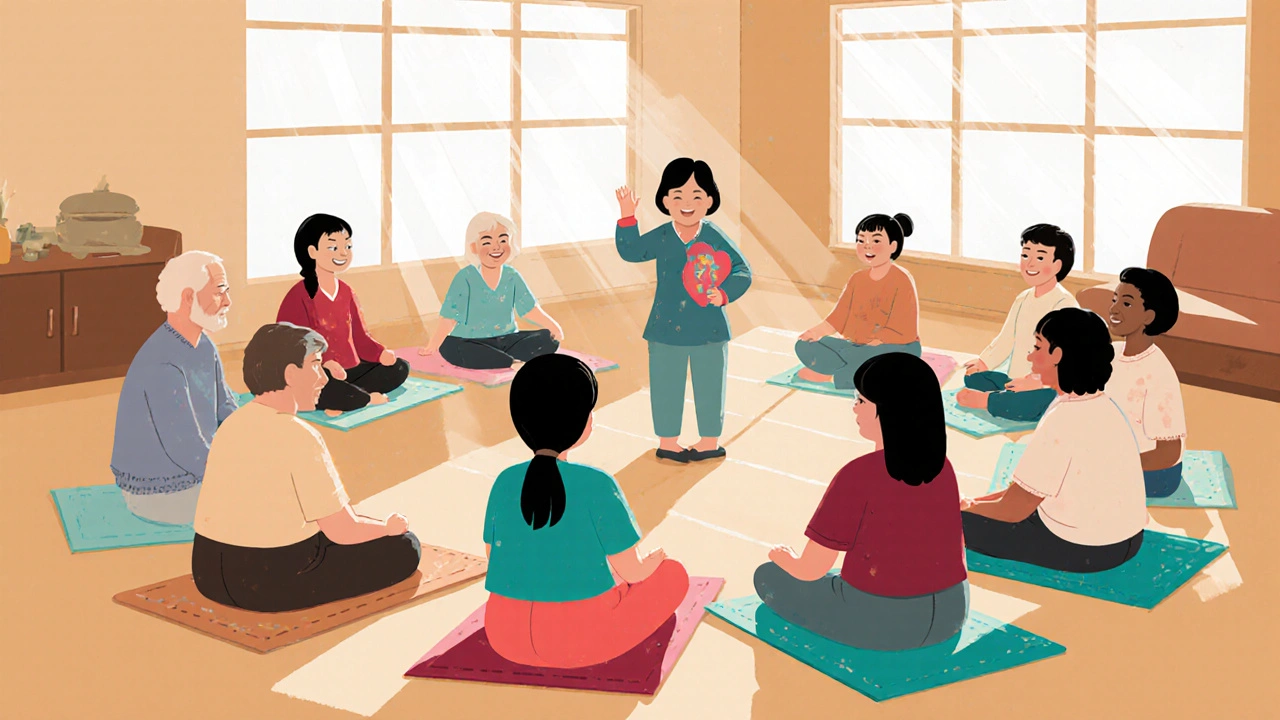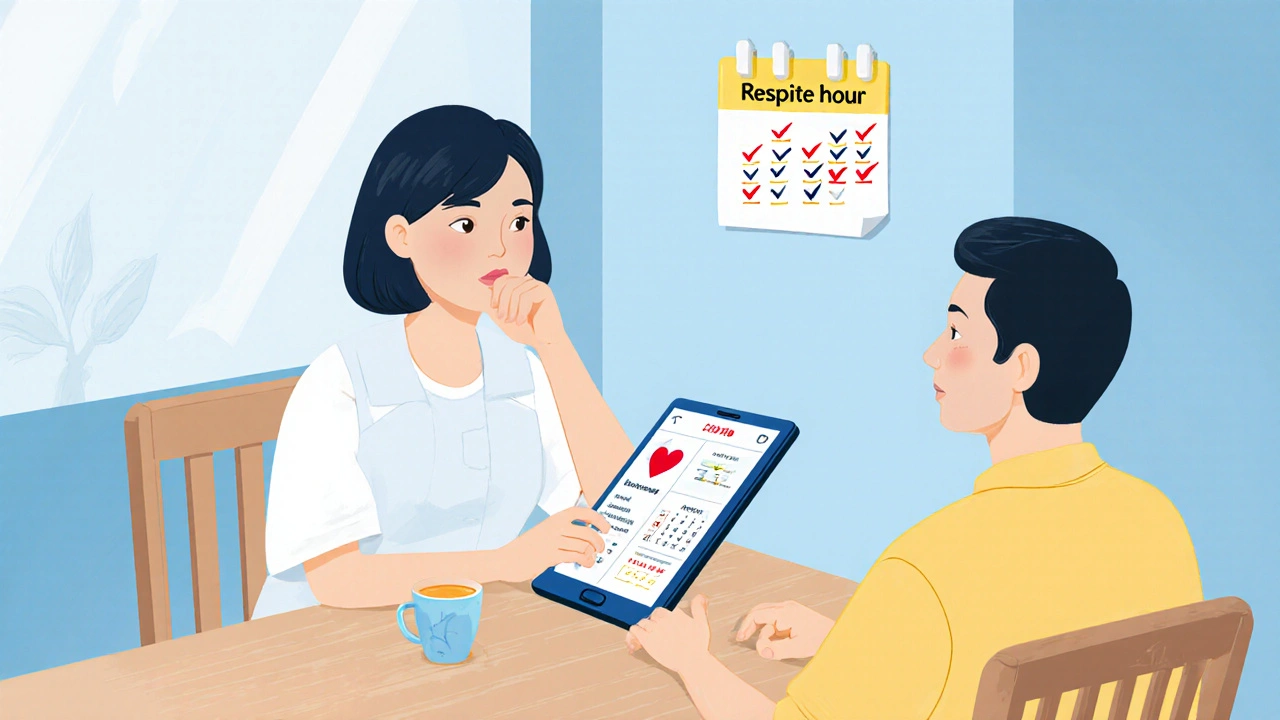Living with Heart Failure is a chronic condition where the heart cannot pump enough blood to meet the body’s needs. It’s not just a medical problem; it reshapes daily routines, relationships, and mental wellbeing. One piece that often gets overlooked is the power of Social Support - the emotional, informational, and practical help patients receive from family, friends, and community resources. Studies show that strong support networks can cut readmission rates, improve medication adherence, and boost quality of life. Below you’ll find a step‑by‑step guide on how patients, caregivers, and clinicians can weave support into every stage of heart failure management.
Understanding the Link Between Social Support and Outcomes
When a patient feels understood and helped, stress hormones like cortisol drop, blood pressure stabilizes, and the immune system works more efficiently. A 2023 Canadian cohort of 1,200 heart failure patients found that those reporting high levels of heart failure‑related social support had a 22% lower risk of hospital readmission within six months compared to isolated peers. The benefit isn’t limited to numbers; patients also report better mood, more confidence in self‑care, and a stronger sense of purpose.
Types of Support That Matter Most
- Emotional support: Listening, empathy, and encouragement that reduce anxiety and depression.
- Informational support: Sharing reliable advice about diet, medication, and symptom monitoring.
- Instrumental (practical) support: Helping with grocery shopping, transportation to appointments, or household chores.
Each type plays a distinct role. Emotional support steadies the mind, informational support empowers decision‑making, and instrumental support eases the physical load of managing a chronic illness.
Building a Personal Support Network
Creating a sustainable network starts with a clear map of who can help and how. Below is a quick checklist patients can use during a routine clinic visit.
- Identify primary caregivers - usually a spouse, adult child, or close friend.
- List community resources - local heart failure support groups, the Canadian Heart Health Alliance, or virtual forums.
- Pinpoint professional allies - cardiologist, nurse practitioner, dietitian, social worker.
- Set communication preferences - phone, text, video chat, or in‑person meetings.
- Schedule regular check‑ins - weekly calls or monthly group gatherings.
Writing this down transforms vague ideas into concrete actions that can be delegated and tracked.
Evidence‑Based Benefits of Support Groups
Support groups blend emotional and informational support while providing a sense of belonging. A 2022 randomized trial in Vancouver compared 150 heart failure patients who attended a bi‑weekly support group with 150 who received standard care only. After 12 months, the group participants showed:
| Outcome | Support‑Group Cohort | Standard‑Care Cohort |
|---|---|---|
| Hospital readmissions (12‑mo) | 15% | 27% |
| Medication adherence (MMAS‑8 score) | 7.4 | 6.2 |
| Quality‑of‑Life (KCCQ score) | 78 | 65 |
These numbers illustrate that regular peer interaction directly improves clinical metrics, not just feelings of goodwill.

Practical Steps for Patients
- Ask for help early. When you notice fatigue or shortness of breath, let a family member know so they can arrange a doctor’s visit.
- Use technology. Apps like MyHeart (Canadian‑approved) can share daily weight, blood pressure, and symptom logs with caregivers.
- Schedule “support time”. Block an hour each week for a video call with a friend or a local group.
- Prepare an emergency plan. Have a list of contacts, medication details, and the nearest emergency department (e.g., Vancouver General Hospital).
- Track your mood. Simple journal entries help clinicians see the mental‑health side of heart failure.
Guidance for Caregivers
Caregivers often juggle work, household duties, and the emotional weight of watching a loved one cope. Here are three proven habits:
- Set boundaries. Define realistic visiting hours and don’t sacrifice your own health.
- Learn the basics. A 2‑hour online module from the Heart and Stroke Foundation covers medication side‑effects, low‑sodium cooking, and safe exercise.
- Leverage respite services. Vancouver’s HomeCare agency offers a few hours of professional help each month - a small investment that prevents burnout.
When caregivers feel supported, patients reap the benefits of steadier, more confident care.
Measuring Social Support in Clinical Practice
Clinicians can use validated tools to quantify support levels, such as the ENRICHD Social Support Instrument (ESSI) or the Medical Outcomes Study (MOS) Social Support Survey. Incorporating these scores into electronic health records enables proactive outreach. For example, a patient scoring below 12 on the ESSI could be flagged for a referral to a community navigator.

Common Pitfalls and How to Avoid Them
- Assuming “family equals support.” Not all relatives can provide helpful assistance; assess each person’s willingness and capacity.
- Over‑reliance on one source. Diversify - combine family, friends, professional services, and peer groups.
- Neglecting cultural preferences. Some patients feel more comfortable with faith‑based groups or language‑specific circles; honor those choices.
- Ignoring technology gaps. Older adults may lack smartphones; provide printed handouts or phone‑call check‑ins as alternatives.
Takeaway Checklist
- Map your personal support network and share it with your cardiology team.
- Join a local or virtual heart‑failure support group - Vancouver Heart Alliance hosts monthly meetings.
- Use a health‑tracking app and grant caregiver access.
- Schedule at least one “support‑time” activity each week.
- Ask your clinician to assess social support with a validated questionnaire.
Frequently Asked Questions
How does social support reduce hospital readmissions?
Support helps patients notice warning signs early, adhere to medication, and keep stress levels low. Together these factors lower the chance of complications that trigger a readmission.
What are low‑cost ways to build a support network?
Start with free community groups, phone‑based peer lines (e.g., Heart Health Helpline), and simple weekly coffee chats with trusted friends. Many hospitals also run free educational workshops.
Can online forums replace in‑person support?
Online forums are valuable, especially for those in remote areas, but they work best when combined with at least occasional face‑to‑face contact. Physical meetings reinforce trust and accountability.
What role does a social worker play in heart‑failure care?
A social worker assesses psychosocial risk, connects patients to community resources, and can arrange home‑care services or financial assistance for medications.
How often should I update my support‑network plan?
Review it at every major clinic visit (typically every 3‑6 months) or after any significant change in health status.


9 Comments
Indeed, a robust support network functions as a pharmacologic adjunct for heart failure patients.
Ah, because apparently a friendly chat can substitute for beta‑blockers and ACE inhibitors, a notion as elegant as prescribing poetry.
The most effective way to start is to simply ask who’s willing to listen, then let them know what you need.
Even a brief daily check‑in can keep anxiety in check and remind you to take meds on time.
So don’t wait for a crisis; build that habit now.
When constructing a personal support network for heart failure, begin by mapping every potential source of help, from family members to community organizations.
Next, categorize each contact by the type of assistance they can realistically provide-emotional, informational, or instrumental.
Assign a primary caregiver who can serve as the central point of communication, ensuring that all updates flow through a single channel.
In parallel, identify at least two local support groups, because redundancy protects you if one meeting is canceled.
Make use of technology such as MyHeart or similar apps to share daily weight and blood pressure readings with those caregivers, turning data into actionable alerts.
Schedule a recurring weekly call, preferably at the same time each Thursday, so that the habit becomes ingrained and reliable.
During each call, review medication adherence, symptom trends, and any psychosocial stressors that have emerged over the past days.
If the patient reports increased fatigue or shortness of breath, the network should trigger a predefined escalation protocol, contacting the cardiology clinic within 24 hours.
Document all interactions in a simple spreadsheet or notebook, noting dates, participants, and outcomes, to track the effectiveness of each support element.
Periodically, at every three‑month clinic visit, ask the healthcare team to reassess the ESSI score and adjust the support plan accordingly.
Do not overlook the value of peer mentorship; patients who hear stories from others who have navigated similar challenges often experience a boost in self‑efficacy.
Remember that cultural preferences matter-some individuals feel more comfortable in faith‑based groups or language‑specific circles, and respecting that choice enhances engagement.
Practical assistance, such as arranging grocery deliveries or transportation to appointments, can be coordinated through local home‑care agencies or volunteer networks.
Respite services, even a few hours per month, provide crucial relief for caregivers and prevent burnout, which in turn stabilizes the patient’s care.
Finally, celebrate small victories-whether it’s a successful weight‑loss goal or a week of perfect medication adherence-because positive reinforcement fuels long‑term sustainability.
By treating the support network as a living system that is regularly evaluated and refined, patients and clinicians create a safety net robust enough to lower readmission risk and improve quality of life.
In the quiet shadows of chronic illness, the heart seeks allies not merely of flesh but of intention; only when the soul is acknowledged does the body obey.
Thus, let the caregiver become a silent witness to the patient’s narrative, a mirror reflecting resilience amidst fragility.
Yo, you forget that the pharma giants don’t want you leaning on your neighbor, they want you glued to overpriced meds.
They’re pushin’ hidden fees in the app updates so you think it’s support but it’s just another cash grab.
Don’t let their agenda sidetrack the real help that comes from true community vibes.
If you live near Vancouver, the Heart Alliance runs a free monthly meetup at the community centre; it’s a straightforward way to meet peers and pick up practical tips.
While community centres are fine, most patients actually benefit more from structured education programs that follow evidence‑based curricula; the informal meetups often lack the rigor needed for proper disease management.
Don’t be fooled by ‘structured’ programs that are just a veil for data mining; the real power lies in grassroots circles that keep the system honest and the patients alive.
Write a comment